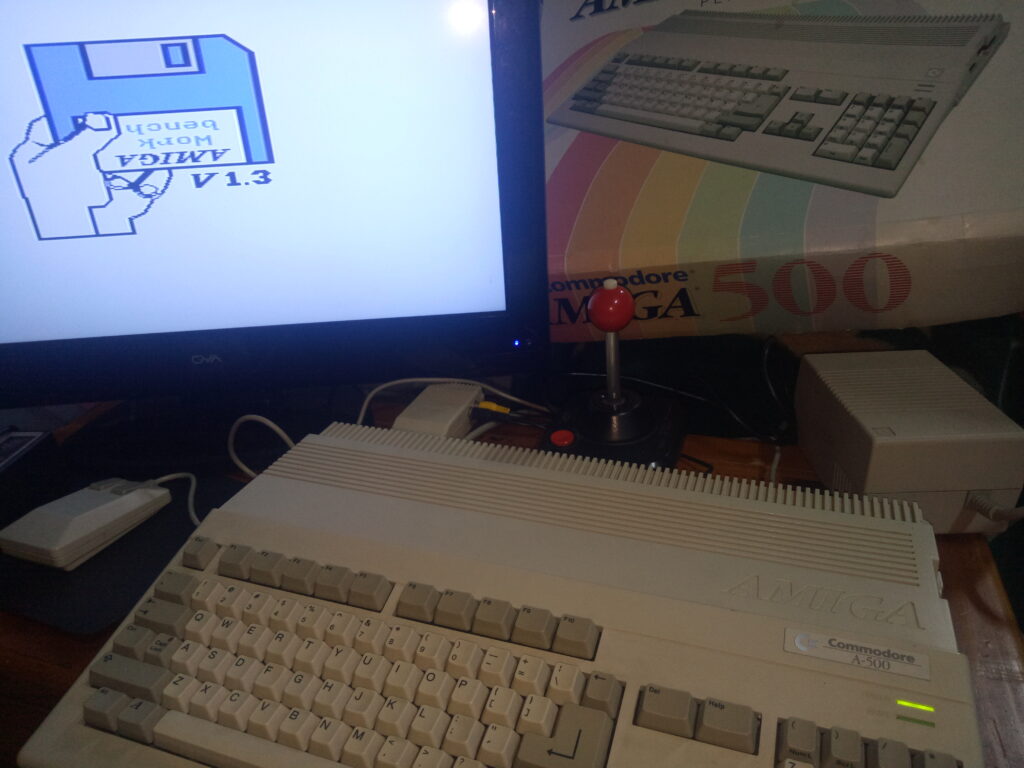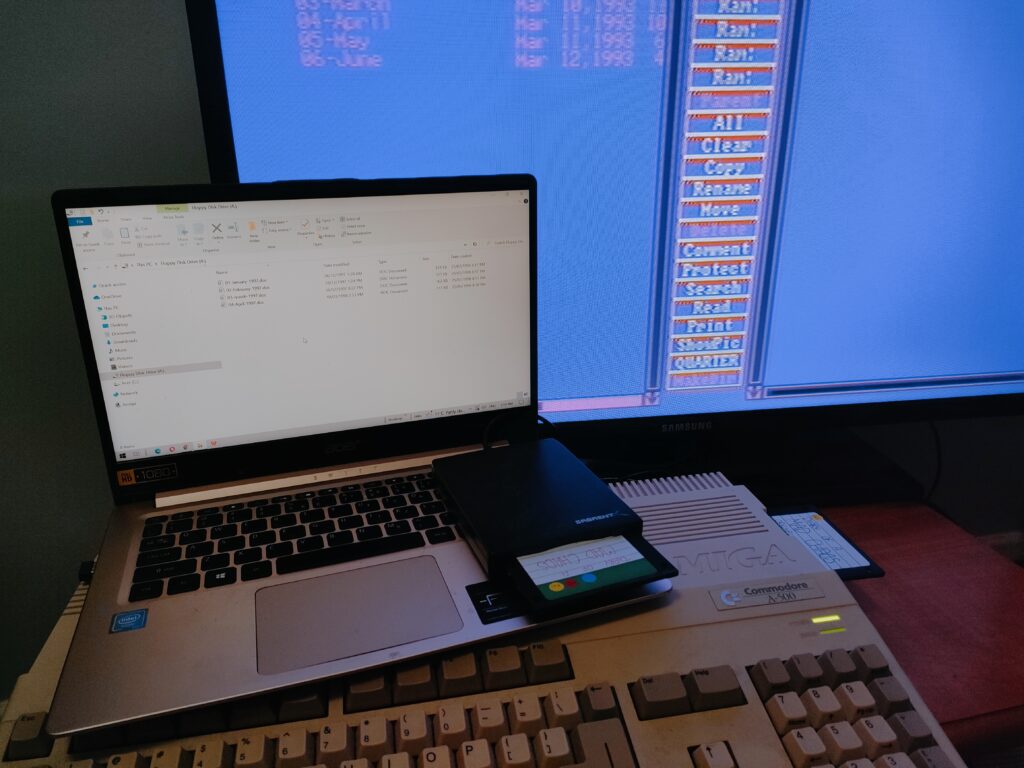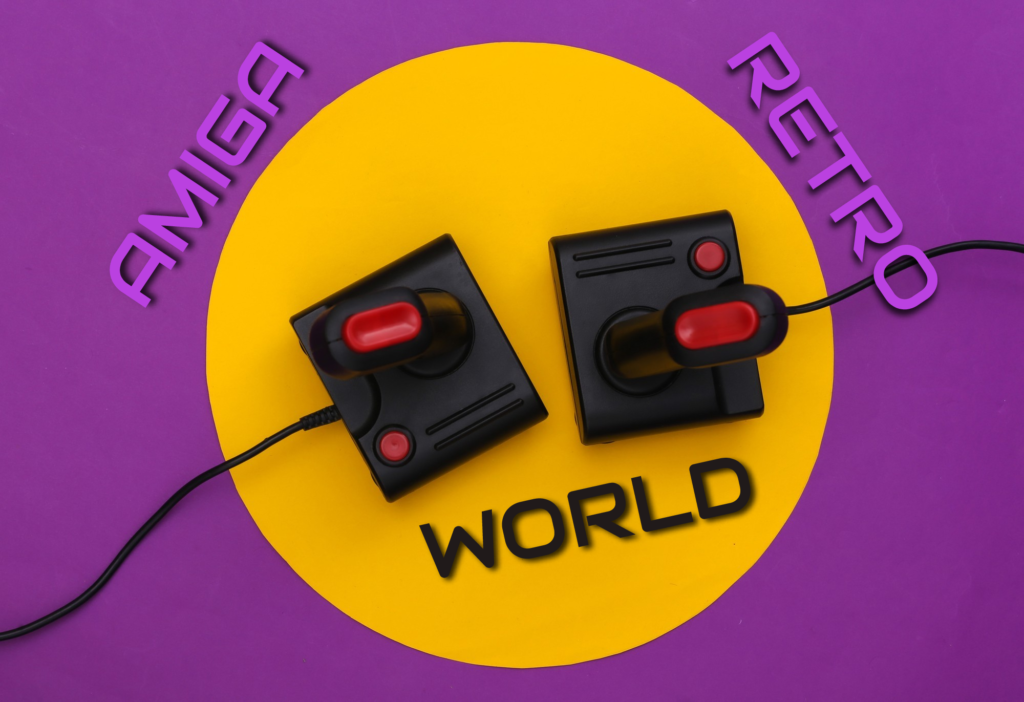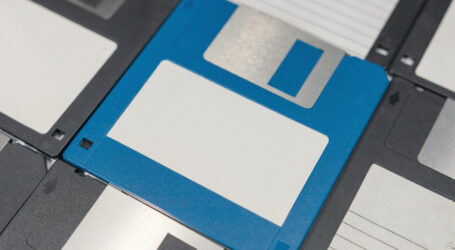Loading Amiga 500 Floppy Disks Into A PC Floppy Disk Drive
Getting my hands on a second-hand Amiga 500 today will go down in personal Amiga folklore. There have been a few hiccups since then however, such as how to set up the Amiga 500 computer with an analog TV display, and testing the A500 floppy drive with a game of Super Cars. Adjusting to computer technology before IBM dominated has revealed more puzzles than Guybrush Threepwood can poke a stick at.

The addition of this new Amiga 500 allowed me to do a stock-take on the three hundred or more floppy disks that have been laying underneath the bed in my childhood home since the 1990’s. I knew that the contents of some floppy disks would be formatted for the PC, while a bulk of the floppy disks were formatted for the Amiga 500.
For this task, I plugged in a portable USB floppy disk drive via USB to my modern ASUS laptop. This would test whether the floppy disks were formatted for the PC. I then inserted a floppy disk into the Amiga floppy drive, turned the Amiga 500 power switch to on, and tested the floppy disk. When the Amiga 500 could not read those floppy disks, I would insert the floppy disks into the PC floppy disk drive. Lo and behold, I found that the Diary of a Mad Chaos documents were readable in the PC drive.

Loading Up Diary Files On The Amiga 500
I had some success loading up my Diary of a Mad Chaos documents onto the PC floppy disk drive. I was able to see date modified timestamps on the PC that went back to 1997. But the time that these files were all created on these PC floppy disks was March 25, 1998 at 8:15pm.
I loaded my diary up to that month, to notice that I didn’t actually write on March 25, 1998. The floppy disk contents and timestamp however now reveal that on that day, I had copied two years of my Diary of a Mad Chaos documents from March 1996 until March 1998 across from the Amiga 500 to MS-DOS ASCII text for the PC .
I am curious to find out why I saved all of those diary files onto floppy disks for the PC? Why did I not just save them onto a PC hard drive? Was I merely backing up the diary files onto floppy disk in case my hard drive corrupted? I’m not sure.
It’s interesting to see that when I went back to read in my diary about what I did on that day, I only wrote, “I played on my computer” in the diary. The date that the diary files were created on a floppy disk formatted for the PC was around the time that I was breaking up with Lyssa and had seen Jewell. I was going through a really weird time.
Amiga 500 vs IBM PC File Type Assignments
In my attempts to load different floppy disks in search of files, I encountered problems with the Amiga 500.
The contents on some floppy disks when loaded on the Amiga 500 contained a file name with a file extension. File types is common practice in the PC world. However, most of the time, I noticed that files on the Amiga 500 did not have file extensions.
The lack of native support for file types and file extensions on the Commodore Amiga Operating System seemed like a glaringly bad usability problem, because the user has to guess what program a save file belongs to. The Amiga 500 running Workbench 1.3 itself does not have what the IBM Windows 95 software, for example, has.
The Windows 95 Operating System provides native recognition of file types and suggests a program to open that file type with. The Commodore Amiga Operating System running Workbench doesn’t have that kind of native file-type recognition.
When I double clicked on a file to load, Workbench 1.3 gave no indication as to what software is associated with that file. .
This reliance on user intuition was a problem with the Amiga 500.
On day one of reliving the Amiga 500 experience, I was able to discern that in the Commodore Amiga era, nothing was centralized. Commodore Amiga gave hardware capability and software options for people to make games. Different developers developed different games for the Amiga. The files with no file type extensions were associated only with those games.
In hindsight, thirty years on from the glory days of Commodore Amiga, I can now appreciate how Commodore Amiga with their popular A500 series didn’t lay a solid foundation for software developers. The developers of AmigaDos could have forced a file type schema, where an image type (BMP, IFF) could load in certain types of software. That omission was a problem with the Amiga 500.
The modern PC now allows plug and play. USB devices can be plugged into anything. The only competition is between Apple Macintosh and IBM. Plug and Play is the evolution of file type recognition. The only drawback is that an Android device cannot be inserted into an Apple Macintosh charger, and vice versa. That competition exists.
Back in Commodore Amiga days, the competition was on the same computer. Different developers didn’t really notice what other developers were doing. Software develops didn’t create a universal file type system that could help develops in being able to recognize each other’s contribution and software.


Diary Of A Mad Chaos is a daily diary written from March 1996 until today, of which individual books and book series have been created, namely “The Lost Years” an exploration of young, entwined love, the “Wubao In China (猎艳奇缘)” book series which provides an extensive comparative analysis of the cultural differences between Eastern and Western societies, and the book titled “Foreigner (华人)” an exploration of race relations in Australia.









